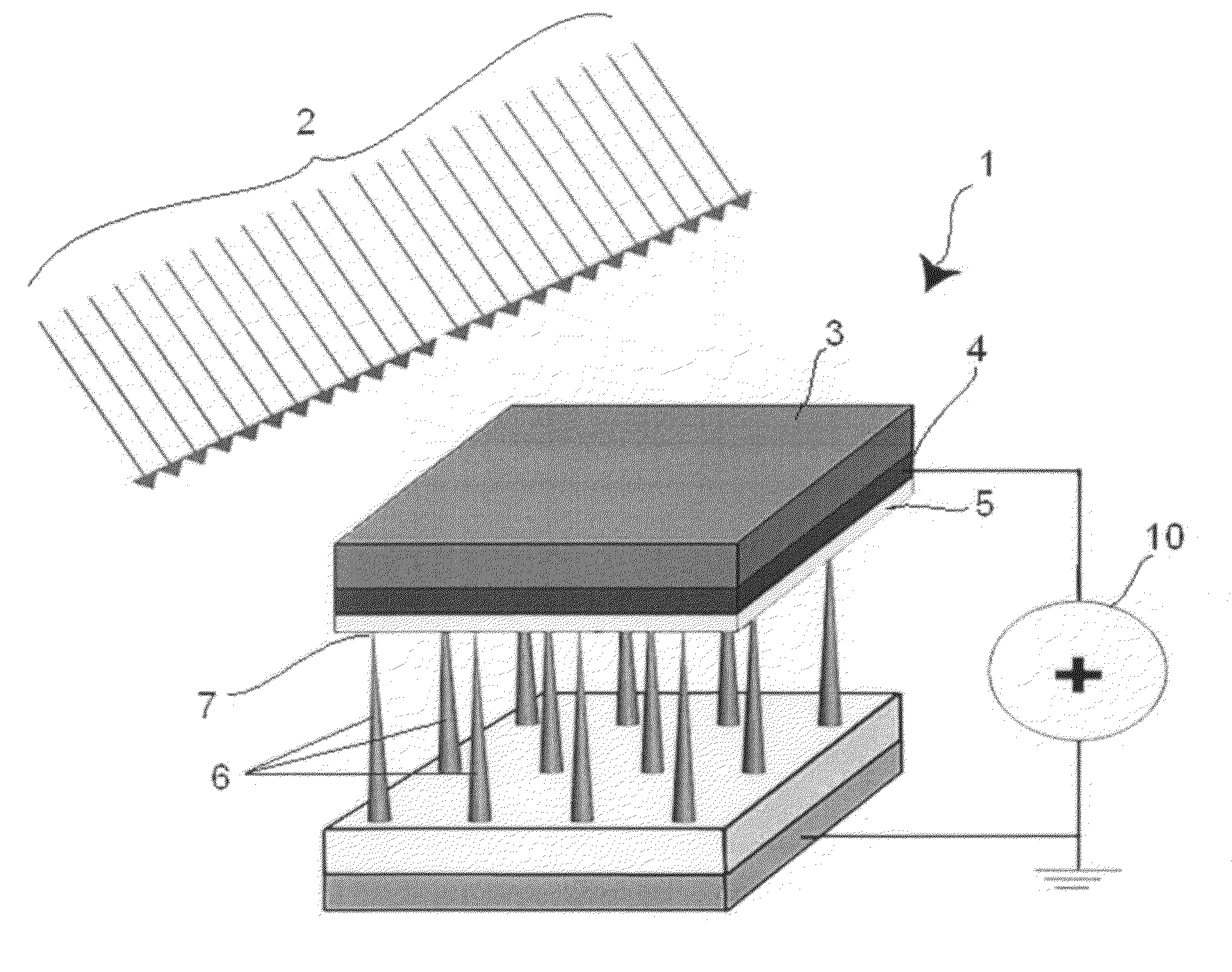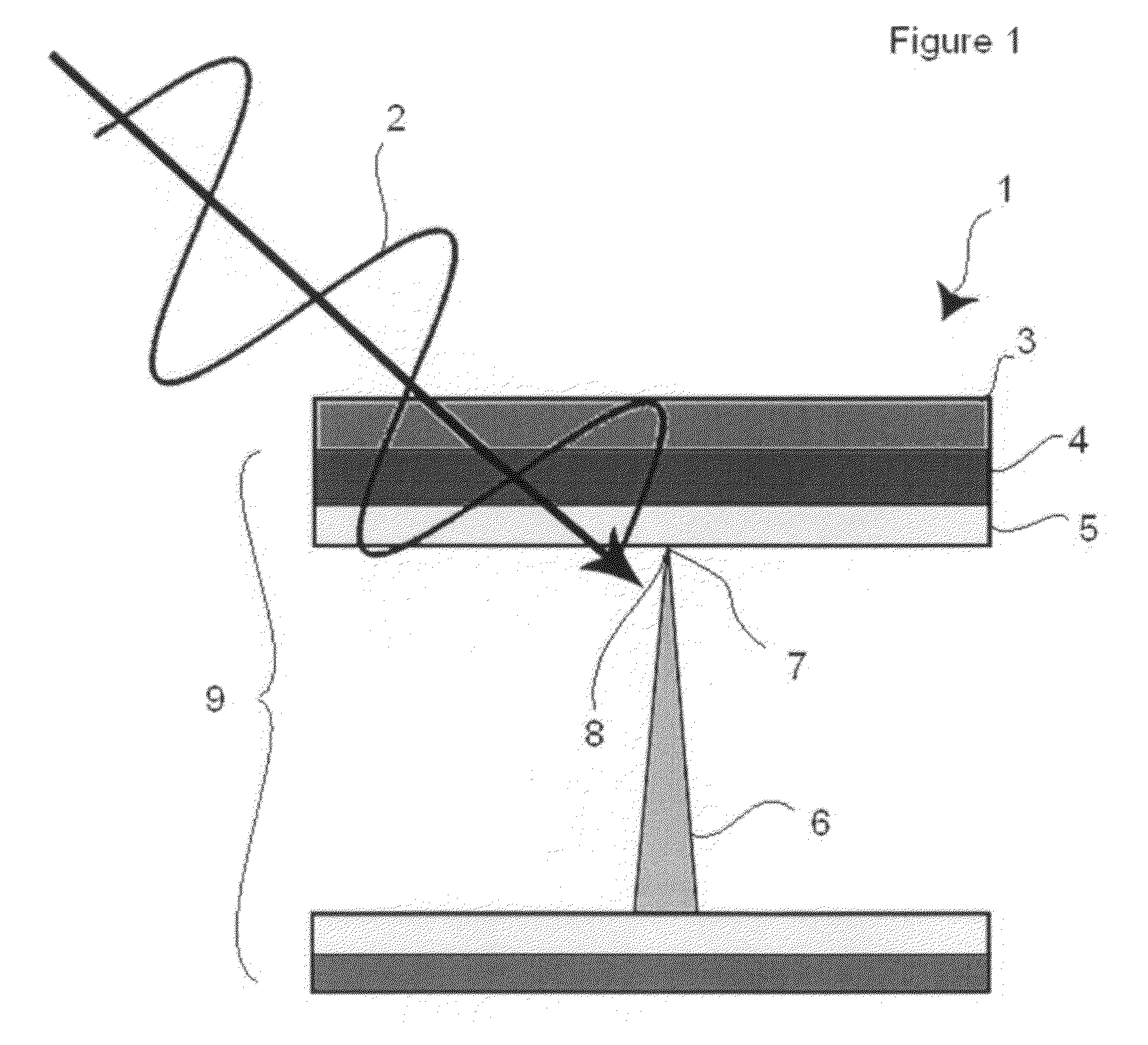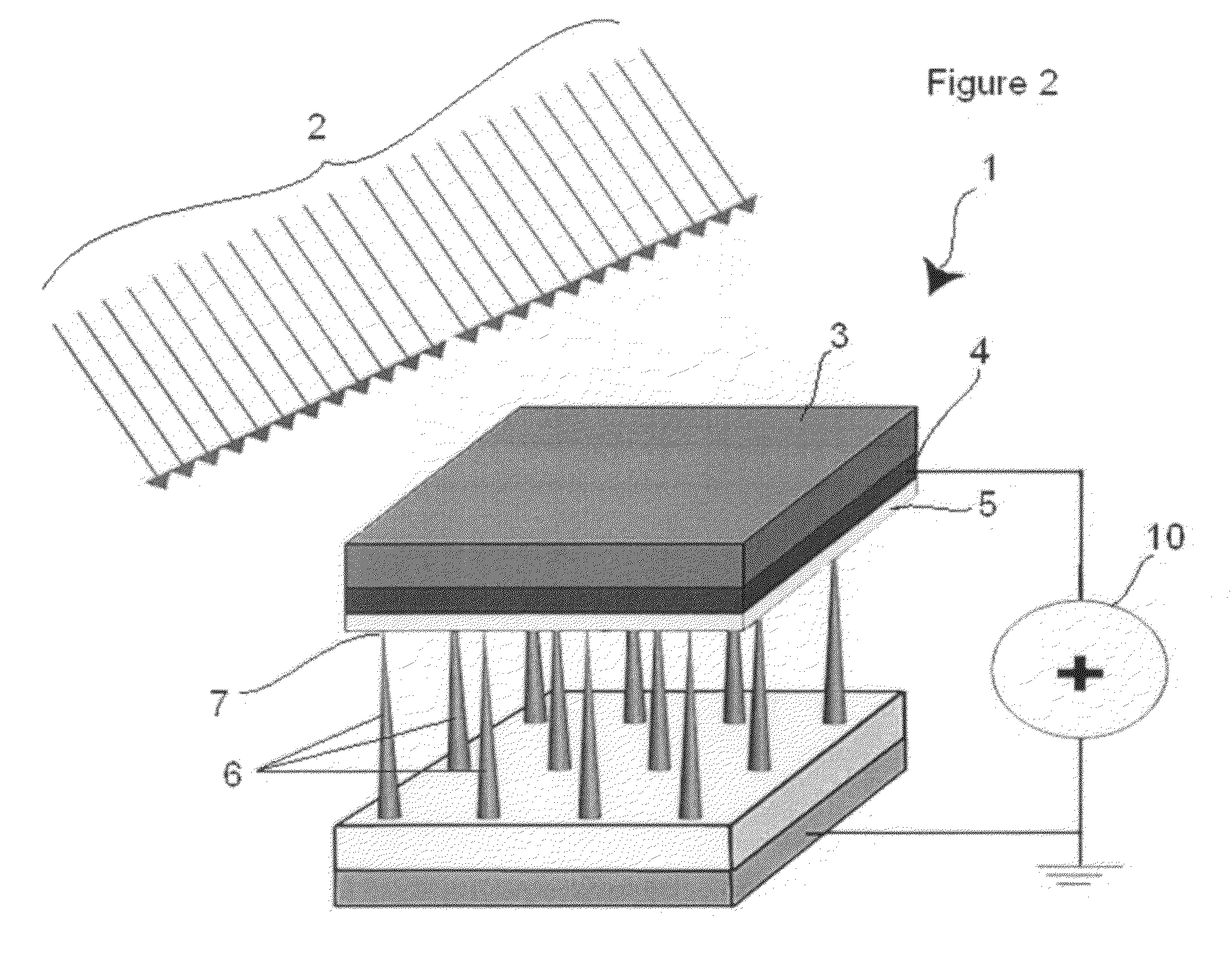Apparatus and system for a single element solar cell
a solar cell and apparatus technology, applied in the field of solar cell devices, can solve the problems of increasing complexity and cost, limited useful power conversion in the optical frequency range, and generally considered low conversion efficiency of solar cells
- Summary
- Abstract
- Description
- Claims
- Application Information
AI Technical Summary
Benefits of technology
Problems solved by technology
Method used
Image
Examples
Embodiment Construction
[0043]In the solar cell apparatus and system of the present invention, the problem of the low frequency response of the planar MIM diodes is intended to be overcome by using the individual constituents of a vertical array of aligned metallic carbon nanotubes (mCNTs) and / or nanowires (which may be metallic tips or whiskers), where each one acts as a combined antenna and rectifier in a point-contact configuration. With the present system, point-contact devices (which have been used in measurements of absolute frequencies of lasers up to the green part of the visible spectrum and which demonstrate a response time of the order of femotseconds that is significantly faster than standard MIM diodes, and which are not believed to have been previously used in solar cells) are used in the exemplary embodiments of the present invention, as described herein.
[0044]As shown in FIG. 1, the solar cell 1 receives incident solar radiation 2 through a transparent cover layer 3. The transparent cover l...
PUM
 Login to View More
Login to View More Abstract
Description
Claims
Application Information
 Login to View More
Login to View More - R&D
- Intellectual Property
- Life Sciences
- Materials
- Tech Scout
- Unparalleled Data Quality
- Higher Quality Content
- 60% Fewer Hallucinations
Browse by: Latest US Patents, China's latest patents, Technical Efficacy Thesaurus, Application Domain, Technology Topic, Popular Technical Reports.
© 2025 PatSnap. All rights reserved.Legal|Privacy policy|Modern Slavery Act Transparency Statement|Sitemap|About US| Contact US: help@patsnap.com



